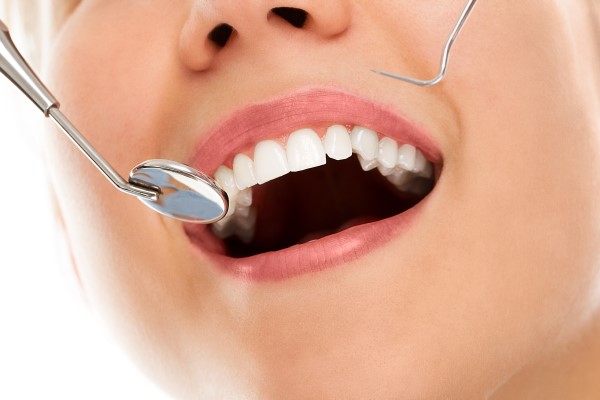How a Complete Health Dentist Can Diagnose Gum Disease

Gum disease does not always come with obvious signs of pain or discomfort. Signs like gum bleeding and recession only start as the disease progresses. It is advisable to seek treatment at the early stage of gum disease, called gingivitis; otherwise, it can worsen into periodontitis, which is more serious and can cause tooth loss. A visit to the dental office allows the complete health dentist to examine the oral cavity and potentially diagnose gum disease.
Diagnosing gum disease
To begin the dental checkup, the dentist will review the patient's dental history, which allows them to get an overview of the patient's oral health and risk factors. Patients may need to answer questions about their symptoms, history of gum disease treatment, oral hygiene routine, smoking habit or a family record of periodontal disease.
Clinical examination
The next stage is to conduct a clinical evaluation, during which the dentist will check for signs of gum disease, including bleeding gums, inflamed or swollen gums, loose teeth, receding gums, periodontal pockets and differences in the gum's texture. Also called a periodontal probe, clinical evaluation is the only effective method of examining the gums' condition. It shows if the gum is healthy or the level of gum disease – gingivitis or periodontitis.
With a gum probe, the dentist will check the depth of the pocket between the gum and teeth. The accurate measurement of gum pockets and jawbone height in a millimeter range is crucial for diagnosing periodontitis. For healthy gum, the maximum probing depth is only 3mm. If gum disease has started affecting the jawbone supporting the teeth, the probing depth will be 4mm and over.
After this examination, the dentist will only perform further tests if there are indications of damages to the structure supporting the teeth. These additional tests usually include x-rays and what is described as periodontal status.
X-rays
the periodontal probe process can help discover areas in the dentition with high probing depths that necessitate follow-up assessment with an x-ray. X-rays should only happen after clinical examination to prevent unnecessary radiation exposure. Ordinarily, an x-ray will reveal two bitewing images, and in more severe situations, the panoramic x-ray may be necessary. The x-ray will show images of the jawbone around the tooth and allow the dentist to determine the extent of bone loss. For each x-ray scan, the teeth will also be checked for signs of cavities or decay.
Microbiological test
When the dental professional is not satisfied with the information gotten from regular tests, they may resort to microbiological tests. With this test, the dentist will examine dental plaque for the presence of harmful bacteria. This extra test is reasonable if the additional information helps improve treatment or avoid unnecessary treatment.
Final note
If the complete health dentist diagnoses gum disease, they may recommend deep professional cleaning called root scaling and polishing. This removes the accumulation of plaque and tartar from the teeth and gums. You will also get recommendations on how to take care of your teeth and gums at home.
Request an appointment here: https://dentalcareofmadison.com or call Dental Care of Madison at (601) 898-9390 for an appointment in our Madison office.
Check out what others are saying about our dental services on Yelp: Gum Disease in Madison, MS.